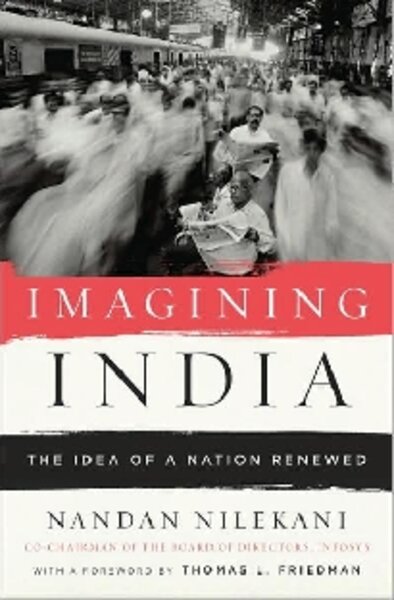Imagining India
Loading...
When India opened its markets, nearly two decades ago, international media dubbed the developing nation an emerging economic superpower. So visitors to India’s financial capital may be forgiven their confusion when they see shantytowns right next to high-rise buildings. And the sight of grimy children peddling glossy magazines at intersections can be bemusing, to say the least.
But the numbers indicate that India is the second fastest-growing economy in the world. Clearly, some explanation is in order – and that’s exactly what Nandan Nilekani attempts to provide in Imagining India: The Idea of a Renewed Nation.
Nilekani is cofounder of Infosys, the NASDAQ-listed Bangalore-based software services company. It was during an interview with Nilekani that New York Times columnist Thomas L. Friedman gained the insight (derived from the startlingly simple idea that the Internet could render geography irrelevant for skilled workers in a global knowledge market) that inspired him to write his international bestseller “The World is Flat.”
Now, Nilekani has come up with a thought-provoking book of his own.
A puzzled visitor from New York once asked Nilekani, “If you can have such good roads in the Infosys campus, why are the roads outside so terrible?”
In “Imagining India,” the entrepreneur gamely takes up the challenge of answering this seemingly straightforward question. An engineer himself, he consults policymakers, academics, and experts in the field to explore the reasons why India grapples with infrastructure issues and seems unable to provide basic services for its masses.
A very detailed response at 511 pages, “Imagining India” could also serve as a road map and a reality check for a resurgent India. This neatly structured narrative on modern India has four segments: Ideas That Have Arrived, Ideas in Progress, Ideas in Battle, and Ideas to Anticipate. Woven in is the back story of how an overpopulated, poverty-stricken nation came to be considered a potential superpower.
One novel idea central to this book: In billion-strong India, the masses are a valuable asset. People represent human capital, Nilekani writes. With investments coming in, they constitute a dynamic pool of workers and consumers who can catalyze growth.
In the popular imagination, India is still an ancient land. But the median age of an Indian citizen is now 23. As the median age of citizens in developed countries inches into the high 30s, India is just getting ready to cash in on its demographic dividend.
Meanwhile, however, technology, that great flattener, has by no means leveled the playing field for all citizens of India. Caste-based access to education and government jobs still keeps worthy aspirants out of the game. Creating wealth-generating enterprises will allow more citizens to participate in the growth story.
But India’s earlier marriage to socialism makes it hard for entrepreneurs to run profitable enterprises smoothly to this day. Dismantling ingrained, failed structures will require a swathe of policy reforms, Nilekani writes.
However, he does offer some practical solutions.
Technology could empower individuals trapped in the vice of antiquated systems. The government counts its citizens but does not store information about each of them – regarding, say, their health, land holdings, and finances – in an integrated, national database.
Once this is set up, giving every citizen an electronic card, with a unique digital identity, would allow the state to deliver what is due to its citizens and vice versa, writes Nilekani. Such a system could remove the sway of corrupt middlemen. India also has a unique opportunity to leapfrog technology by learning from the experiments of the First World and becoming an innovator in public healthcare or alternative energy.
Interspersed with interesting ideas are heartwarming stories about individuals working to make a difference in the flawed framework. Nilekani writes unflinchingly of challenges ahead. “Imagining India” manages to strike that fine balance between hope and caution.
This well-researched book – with its extensive bibliography, footnotes, and timeline – is a must-read for any India-watcher, although modern India’s national obsessions – Bollywood and Cricket – are not discussed here. For these topics, the reader has to look elsewhere.
This book does provide answers for those curious about India’s chances vis-à-vis the other contender to the superpower title: China.
Reading these chapters, it quickly becomes apparent that Indian policymakers face constraints their Chinese counterparts do not. The Indian government cannot implement far-reaching, top-down reforms precisely because the nation is a democracy where elections take place every five years. Many powerful lobbies want to maintain status quo, Nilekani points out. Still, this is the information era and knowledge could be a powerful catalyst for change.
So, those rooting for India – and as an Indian-American, I am one of them – can take heart in Friedman’s response on the India-China match-up: “I don’t think that this century can belong to a country that censors Google.”
Vijaysree Venkatraman is a Boston-based science writer.






